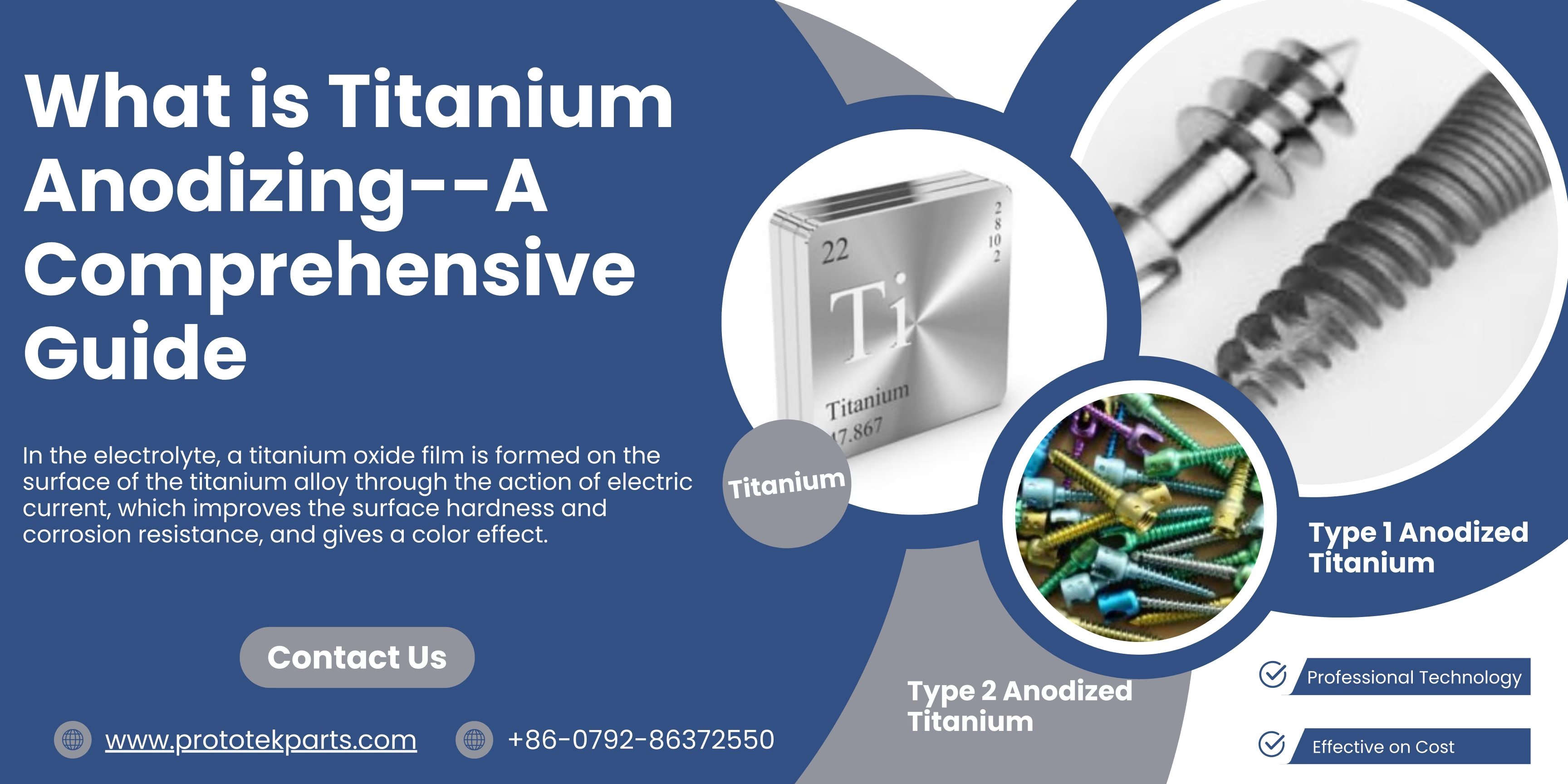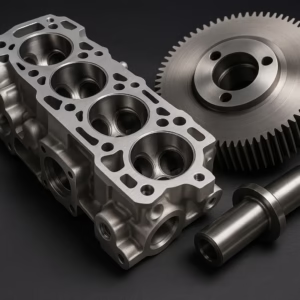What is Titanium Anodizing-A Comprehensive Guide
Definition of Titanium
Titanium is a chemical element; it has the symbol Ti and atomic number 22. Found in nature only as an oxide, it can be reduced to produce a lustrous transition metal with a silver color, low density, and high strength, resistant to corrosion in seawater, aqua regia, and chlorine.
Applications of titanium parts
Titanium is popular wherever a high tensile strength-to-density ratio needs to be maintained, such as in spacecraft, automobiles, motorcycles, and naval vessels.
Aluminum has a good strength-to-weight ratio, while stainless steel is heavier but stronger. Compared to stainless steel, titanium has the same strength but weighs less. They are both resistant to corrosion, with stainless steel having a layer of chromium oxide and titanium having a layer of titanium nitride to prevent rust. Compared to aluminum, titanium weighs more but is twice as strong. Depending on the application, titanium is an ideal replacement for both metals.
Commercially pure titanium material maintains its integrity in high-temperature environments up to 572° F, primarily due to its strength and ability to resist creep and heat. Titanium has lower electrical and thermal conductivity than aluminum, which can lead to heat buildup.
Stamped Titanium Alloy Parts for Aerospace Industry
Common uses of titanium in the aerospace industry include:
- Rotors
- Compression blades
- Hydraulic system components
- Armor plates
- Navy ships
- Spacecraft
- Missiles
- Structural parts
- Landing gear
- Helicopter exhausts
From engines to frames, almost 50% of aircraft applications use grade 5 titanium alloy or 6AL 4V (6% aluminum, 4% vanadium), which offers corrosion resistance, heat resistance, maintainability, and lightweight strength.
Titanium Implantable Medical Devices
Titanium is biocompatible with the human body, meaning that the body does not reject it. It also has a natural ability to bond with human bone to form a permanent structure. This makes it useful in a variety of medical device components, including medical and dental implants, medical devices, and cosmetic items, such as:
- Heart valves
- Plates, pins, rods, and cages surgically implanted in the body
- Hip and knee replacements
- Needles, surgical forceps, scissors, tweezers, etc.
- Dental implants
- Hearing aids
- Spinal fusion cages
Titanium alloy surface treatment process
- 阳极氧化
In the electrolyte, a titanium oxide film is formed on the surface of the titanium alloy through the action of electric current, which improves the surface hardness and corrosion resistance, and gives a color effect.
- Sandblasting and polishing
Sandblasting: Use fine sand or aluminum oxide particles to spray the surface of the titanium alloy to remove burrs, oxide layers and produce a uniform matte or matte effect.
Polishing: Use mechanical polishing or electrolytic polishing to make the surface bright and smooth.
- PVD coating (physical vapor deposition)
Deposit a layer of high-hardness coating (such as titanium nitride TiN, chromium nitride CrN, etc.) on the surface of the titanium alloy to enhance wear resistance and corrosion resistance
- Chemical passivation
Through chemical treatment, a passivation layer is formed on the surface of the titanium alloy to improve corrosion resistance.
- Laser marking
Use a laser beam to engrave a logo, pattern or number on the surface of the titanium alloy.
In this article, I will focus on the anodizing process of titanium
Titanium acts as an anode in the electrolyte. Through the action of electric current, an oxidation reaction occurs on the titanium surface, forming a dense oxide film (TiO₂).
As the voltage increases, the thickness of the oxide film increases.
Oxide films of different thicknesses will produce interference effects on light, thus showing different colors.
The color depends on the film thickness and refractive index, and a colorful effect can be achieved without pigments or dyes.
✅ Chemical reaction equation: Ti+2H2O→TiO2+4H++4e−
Types of Titanium Anodizing
There are two common types of titanium anodizing: Type 2 and Type 3. Type 1 is less common and is used for specialized, high-temperature treatments.
Type 2 Anodized Titanium – Wear Resistance
Type 2 anodizing is used primarily for wear resistance purposes: it protects the metal surface from the effects of abrasion. Untreated titanium parts rub against each other and produce titanium dust, which is undesirable for applications such as orthopedic implants. Type 2 anodizing provides a wear-resistant surface and helps prevent seizing or rubbing between sliding titanium surfaces.
Type 2 anodized titanium has friction-reducing or lubricious properties that can help patients receiving orthopedic implants by improving joint mobility.
For most Type 2 titanium anodizing lines, AMS 2488 is the applicable specification. Aerospace standards organization SAE International is the governing body for the Type 2 specification, which was last revised in 2019.
For aerospace applications, Type 2 anodized parts are compatible with aviation fluids and can withstand extreme temperatures ranging from -70 °F to 260 °F. Type 2 anodized titanium resists corrosion caused by salt water and moisture.
Type 2 anodized titanium parts have a distinctive gray color. This makes them easily distinguishable from stainless steel or colored anodized titanium.
Type 3 Titanium Anodizing – Colored Titanium
Type 3 Titanium Anodizing is also known as Titanium Colored Anodizing. Type 3 Colored Anodizing is widely used in the medical community for quick visual identification of components. For example, an orthopedic surgeon in surgery can simply request a blue bone screw without specifying the 12mm length of the screw.
If you have any needs, contact us via email at Lynnyao@prototekparts.com 或致电+86-0792-86372550
标签
- Tianium anodizing

























































